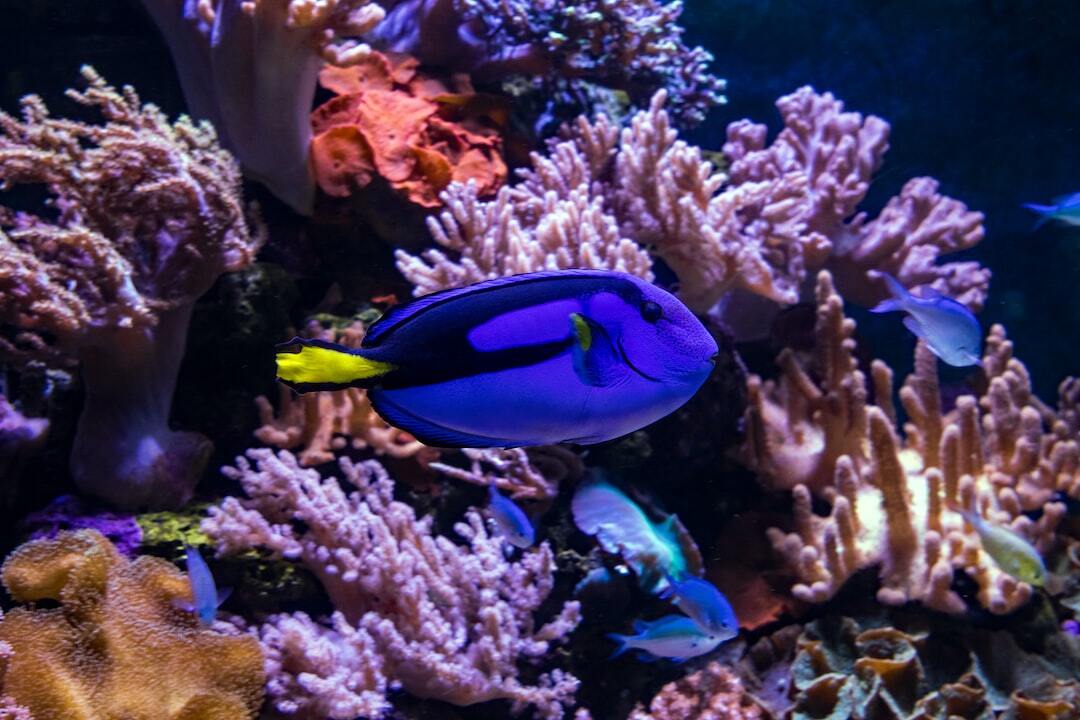Did you know that Blue Tangs are a popular saltwater fish for both home and public aquariums?
These incredibly colorful and adorable fish can grow up to 12 inches in length. They’re also low-maintenance and have a low fish food consumption, making them a great choice for beginners as well as veterans. If you’re looking to purchase some Blue Tang fish, first you need to know how to care for them.
Not sure how to care for your Blue Sang? Don’t worry, we’ve got you covered! Here’s everything you need to know.
1. Tank Size and Setup
When it comes to owning Blue Tang and taking care of it, the tank size and setup play a crucial role. Blue Tangs are active swimmers, and they require ample space to thrive.
It is recommended to provide them with a tank capacity of at least 75 gallons to ensure they have enough room to move and explore. A larger tank will minimize stress and allow for better territorial boundaries.
Additionally, creating a well-established reef environment with plenty of live rocks and corals will not only provide hiding spots but also simulate their natural habitat. Adequate tank size and a well-thought-out setup are vital for the overall health and happiness of Blue Tang fish.
2. Water Parameters
Blue Tangs like the water to be between 74°F and 82°F (23°C and 28°C) and have a pH level of 8.1 to 8.4. You should regularly test the water to make sure the ammonia, nitrate, and nitrite levels are safe. If they’re not, you’ll need to make water changes to keep the water clean and healthy.
By keeping the water at the right temperature and maintaining good water quality, you’ll provide a comfortable home for your Blue Tang fish to swim and thrive in.
3. Quality Filtration and Circulation
Caring for Blue Tang fish requires proper filtration and circulation in their tank. Filtration helps remove waste and keep the water clean, while circulation ensures there is enough oxygen and prevents stagnant areas.
Blue Tangs produce a lot of waste, so it’s important to have a good filtration system. A protein skimmer and a powerful filter will help keep the water clear.
Circulation is also important for the fish’s health. It helps distribute oxygen throughout the tank and prevents the water from becoming still. By maintaining proper filtration and circulation, you can provide a healthy and comfortable environment for your Blue Tang fish to thrive.
4. Proper Lighting
Proper lighting is important for the health of Blue Tang fish. These colorful creatures need a balance between light and shade, just like they have in their natural reef homes.
To make sure they have the right lighting, use a combination of full-spectrum lights and shaded areas in their tank. It’s also essential to give them a consistent lighting period of about 10 to 12 hours each day. This will help replicate their natural environment and support their overall well-being.
Remember to research the specific lighting needs of any corals or other tank inhabitants too. By providing the right lighting, you can ensure your Blue Tang fish stay happy and swim beautifully in their aquarium.
5. Good Tank Mates and Compatibility
Blue Tangs are generally peaceful, but they can be territorial towards other tangs or similar-shaped fish. It’s best to avoid aggressive or overly territorial species. Good tank mates for Blue Tangs include peaceful reef fish like clownfish, gobies, and wrasses.
Before adding any new fish to the tank, it’s important to research their compatibility and behavior. Taking time to observe and understand how different fish interact will help create a harmonious environment. Remember, a happy and stress-free tank leads to swimmingly healthy Blue Tangs.
6. Varied and Nutritious Diet
Blue Tangs eat a mix of marine algae and small invertebrates in the wild, so it’s important to mimic their natural diet. Feed them high-quality commercial foods like algae-based flakes or pellets, and occasionally give them treats like frozen or live brine shrimp and mysis shrimp.
It’s best to feed them in small amounts multiple times a day to make sure they get enough nutrition. By offering a balanced diet, you can keep your Blue Tang fish healthy and swimming happily in their aquarium.
7. Algae Control
These beautiful fish have a natural fondness for algae, so it’s important to provide them with suitable options. Adding live rock with algae growth and incorporating macroalgae or seaweed into their diet can help satisfy their grazing instincts. By doing so, you can reduce the chances of them nibbling on corals or undesirable sources of algae.
Remember, a balanced and nutritious diet is crucial, so supplement their meals with high-quality commercial foods and occasional treats like brine shrimp or mysis shrimp. Providing a variety of marine vegetation and ensuring their environment is free of excess algae will contribute to the swimmingly healthy life of your Blue Tang.
8. Disease Prevention and Quarantine
Taking steps to prevent diseases and ensuring proper quarantine procedures are essential for keeping Blue Tang fish healthy.
When looking to buy a Blue Tang, it is important to buy from a reputable source. By being diligent and selective in your choice of where to buy Blue Tang, you can ensure that you are acquiring a healthy fish that has been ethically sourced and properly cared for.
Before adding any new fish or corals to the tank, it’s important to use a separate quarantine tank to observe and treat potential health issues. This helps to prevent the spread of diseases to the main aquarium.
Make sure to observe the new fish for any signs of illness, such as unusual behavior or physical abnormalities, during the quarantine period. Sourcing Blue Tang fish from reputable suppliers reduces the risk of introducing sick or stressed fish into the aquarium.
Disease prevention and quarantine measures are vital for maintaining the well-being of Blue Tang fish and keeping the aquarium a swimmingly healthy environment.
Blue Tang Care Tips
In conclusion, taking good care of Blue Tangs is key to the health and happiness of your fish. The above care tips serve as a great starting point for any aquarist to follow for these unique and fascinating creatures.
Keep up with regular water changes and close monitoring of your Blue Tangs, and you should enjoy many years of healthy and colorful fun! Try it today and you’ll be astounded by the results!
We have plenty of informative articles available to you throughout our site. Check them out!




